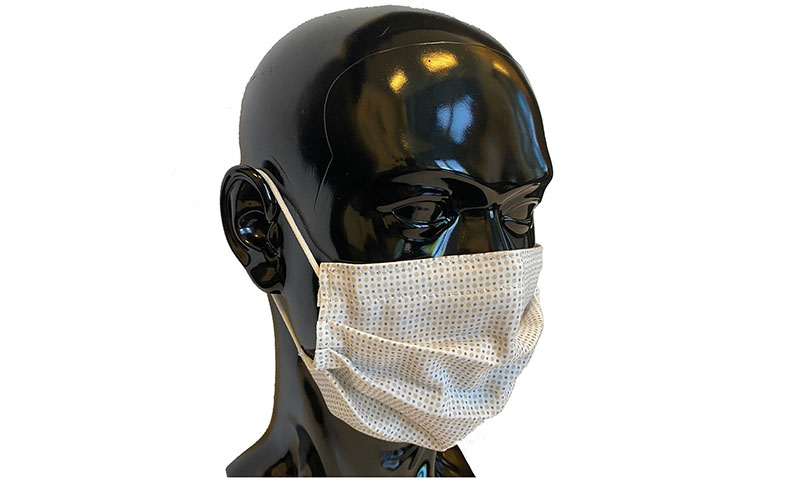With the alarming rise of coronavirus infections all over the globe, governments are urging their citizens to wear face masks in public places. However, coronavirus particles that attach to PPE (personal protective equipment) surface pose a significant threat to the spread of the virus. The masks themselves may be a way for diseases to spread.
Read more Huami’s Amazfit Aeri Mask Self-Disinfects and Unlocks Your Phone With Face ID
A team of researchers at Indiana University (IU) has published significant research findings via pre-print in ChemRxiv demonstrating for the first time that coronaviruses are killed upon exposure to an electroceutical fabric, reports Indiana University.
“Electroceutical” refers to a matrix of embedded microcell batteries that creates an electric field and wirelessly generates a low level of electricity in the presence of moisture.
It is well known that viruses can be electrically charged. Coronaviruses rely on electrostatic interactions to be able to attach to their host and assemble themselves into an infective form. Their structure must remain stable in order to spread infection. The IU researchers sought to exploit the coronaviruses’ own electrokinetic characteristics to try to dismantle their infectivity.
The IU team’s research results show that the ability of the virus to infect is fully eliminated within one minute of contact with the fabric, which disrupts the electrostatic forces the virus needs.
The researchers hope to receive approval through the FDA’s Emergency Use Authorization program to apply use of the fabric specifically for face masks in the fight against COVID-19. Currently, face masks have little to no ability to kill viruses or bacteria.
The electroceutical surface technology, called V.Dox Technology, is a proprietary dot-matrix pattern of embedded microcell batteries that create an electric field and wirelessly generate a low level of electricity when moist.

Previously, the same researchers have reported the antibacterial and antibiofilm effects in the management of infected wounds.
The electroceutical dressing is currently FDA cleared and commercialized by Vomaris Inc. It is made of polyester fabric printed with alternating circular metal dots of elemental silver and zinc metals that create moisture-activated microcell batteries.
“This work presents the first evidence demonstrating that the physical characteristic features of coronaviruses may be exploited to render them non-infective following contact with low-level electric field-generating electroceutical fabric,” said Chandan Sen, principal author of the study and director of the Indiana Center for Regenerative Medicine and Engineering at the IU School of Medicine.
“Our hope is that these findings will help Vomaris receive FDA Emergency Use Authorization and that we can utilize this fabric widely in the fight against COVID-19, ultimately saving lives.”
Read more NBA Players To Wear Oura Smart Ring To Track COVID-19 Symptoms
Vomaris President and CEO Mike Nagel: “We are extremely encouraged by these first reported results on our technology and the promise it holds to help in the fight against the spread of COVID-19 and other viral-borne illnesses. Because this embedded microcell battery technology can be applied to a wide variety of materials, we believe it has the potential to usher in a whole new way to think about PPE.”
In the video below, Chandan Sen discusses his research and its potential applications for health care workers fighting infectious diseases:












